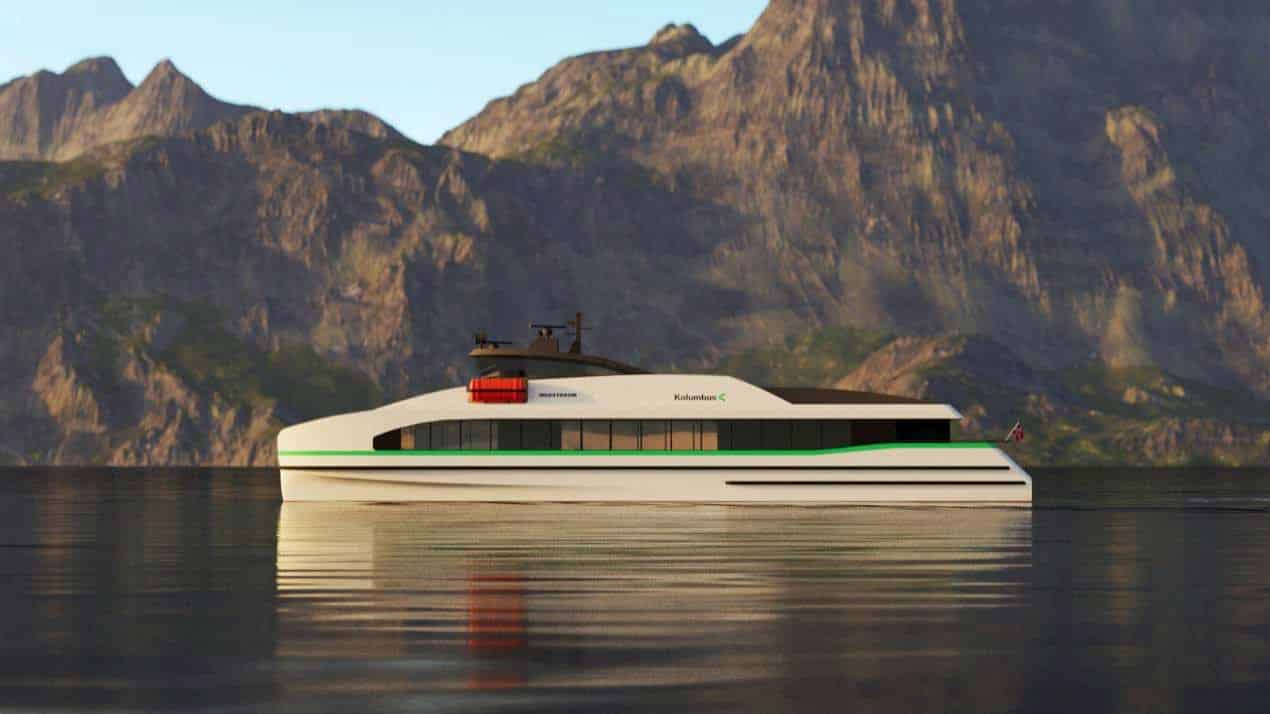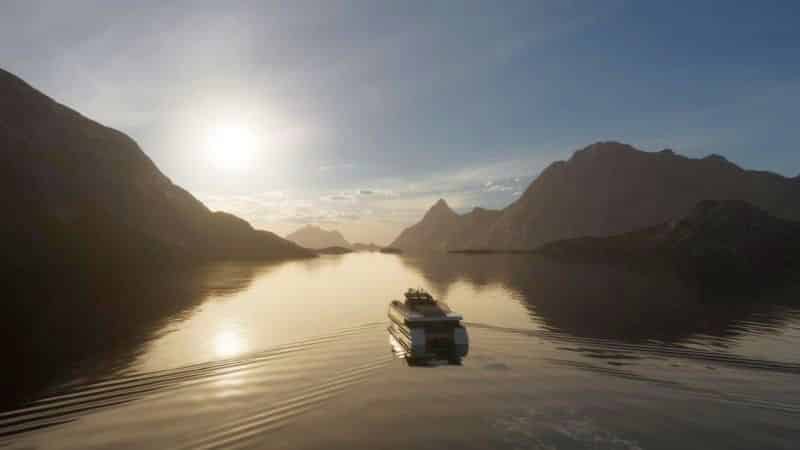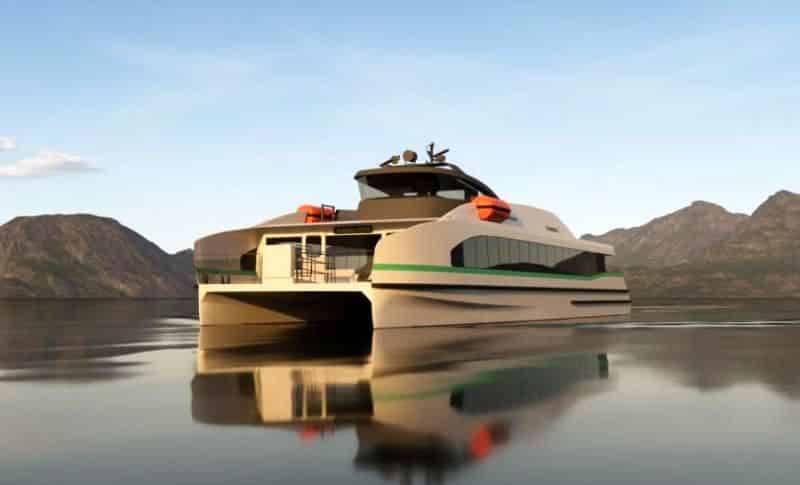
[ad_1]

The construction has commenced on the world’s first fully electric passenger fast ferry at the Fjellstrand shipyard on the west coast of Norway.
Equipped to carry around 150 passengers, the catamaran vessel will be 31 metres long with a nine-metre beam. It will be equipped with two electric motors and a 1.5MWh capacity battery with charging power of more than 2MW. This will be the world’s first fully electric and zero-emission fast ferry classed in accordance with the International Code of Safety for High-Speed Crafts (HSC Code).
As the TrAM project’s demonstrator vessel, it will begin a trial passenger service between the city of Stavanger and surrounding communities and islands in spring 2022 to test and validate the project findings. The vessel has been designed for a service speed of 23 knots and has been named Medstraum (literally ‘with electricity’ and ‘co-current‘ in Norwegian).

Image Credits: Kolumbus/NCE Maritime Cleantech
The TrAM project was initiated by industry cluster organization NCE Maritime CleanTech and is being coordinated by Kolumbus, the independent mobility services arm of Rogaland County Council. “TrAM’s overall aim is to develop new modular methods for the design and production of zero-emission fast ferries for inshore passenger transport, in order to reduce investment costs and delivery time,” said project manager Mikal Dahle of Kolumbus.
Emissions reduction goals
The zero-emission aspect is the main driver for Kolumbus as part of its ongoing efforts to reduce the footprint of its public transport assets. Rogaland County Council has itself committed EUR 6.8m in co-funding for the vessel. “Rogaland County Council has a strategy to drastically lower emissions for all ferry routes. The TrAM project showcases what is possible for future public transport – with no noise or emissions to the environment”, said Rogaland County mayor Marianne Chesak.
The TrAM project scope also includes the development of two further ‘replicator’ vessels, one for passenger operations on the River Thames in London and the other for deployment on inland waterways in Belgium.

Image Credits: Kolumbus/NCE Maritime Cleantech
Collaborative design
The project partners have worked hard to optimize the design of the Medstraum and the hydrodynamic performance of the hull. Both the hull and superstructure will be built in aluminium, which in addition to low weight for lower energy consumption contributes to the circular economy as it is easy to recycle.
Modularized design approach
TrAM is also revolutionary in terms of simplified design and manufacturing of the future vessels, drawing on Fraunhofer IEM’s experiences in modular production techniques from the car and aviation industries. Using advanced modularisation, the project aims to lower production costs and engineering hours for electric fast ferries by 25% and 70%, respectively, which will significantly enhance their competitiveness.

Image Credits: Kolumbus/NCE Maritime Cleantech
Simply put, modularisation is a design-phase concept for handling internal complexity while allowing for external variety. Modular architecture enables individual modules to be combined so that subsequent vessels can be adapted to specific customer requirements. Reusing modules also allows for faster development and production. “Increased automation, more efficient use of materials, shorter construction time and lower labour costs together represent a new chapter in shipbuilding while increasing the competitiveness of all stakeholders,” said Dahle.
Reinvigorating waterways as transport medium
Hege Økland, CEO of NCE Maritime CleanTech, emphasizes that electric-powered high-speed vessels are highly relevant for urban areas all over the world. “Streamlined manufacturing is a very important factor as it increases the attractiveness of such vessels in terms of cost and footprint. In addition to their green credentials, they also support the renewed use of inshore waterways in Europe for freight and passenger transport,” she said.
Backed by the EU
The TrAM project started in 2018 and has secured EUR 11.7m in financing from the European Union’s Horizon2020 research and innovation programme, one of the largest amounts ever awarded to a single project. The project has also received funding for dissemination activities from the Research Council of Norway.
Press Release
[ad_2]
This article has been posted as is from Source